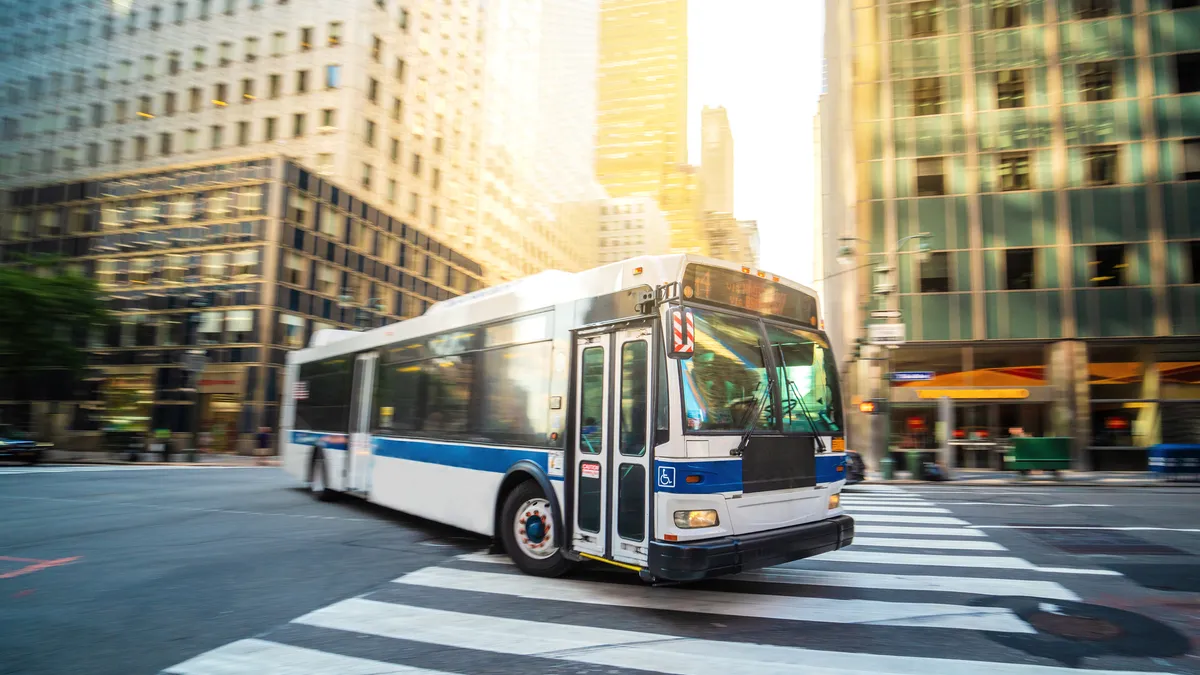Public transit is slowly making a comeback in the U.S. since ridership declined after the start of the COVID-19 pandemic. Transit systems have surpassed 70% of their 2020 ridership levels, but severe public transit labor shortages are hindering fuller recuperation.
In March, 96% of 190 agencies surveyed by the American Public Transportation Association reported experiencing labor shortages, according to a report released last month by the association. The shortages are most acute at agencies serving large, urbanized areas and agencies with greater ridership.
Workers are leaving transit jobs due to concerns about wages, safety, inflexible schedules and lack of professional growth, the report stated. But there are a number of strategies that transit agencies can take to recruit new employees and streamline the hiring process.
For instance, grievances about work schedules and compensation are the leading reasons transit workers quit, according to the APTA report. Most agencies said those concerns are leading to more departures today than before the pandemic.
Improving compensation generally means increasing wages, but given their tight budgets, agencies should get more creative with their reward systems, according to Matt Dickens, APTA’s director of policy development and research.
“Emphasize the benefits packages, which can be pretty high quality,” often better than what workers would receive in the private sector, he said.
Some agencies have explored other forms of compensation, according to the APTA, such as acquiring and providing worker housing and offering student loans and tuition benefits.
Solving workers’ scheduling complaints is “one of the more difficult challenges,” Dickens said. “It’s more long-term. It goes into all the pieces of the operations.”
“Given the centrality of schedule to the workforce shortage,” the report recommended that agencies explore moving from a “cafeteria approach — where each driver picks their runs and days off in order of seniority — to a weekly rostering approach. Under such a system, agencies “minimize the difference between operator’s workweeks by combining daily runs to create complete weeks of work for operators.” APTA also recommended shift differentials to “encourage and reward workers for taking tougher shifts.”
Although concern about work schedules was identified as one of the most important factors causing workers to quit, most agencies have not taken steps to improve the situation, the report added.
Streamlining the hiring process is another way to help alleviate the labor shortage, Dickens said.
“You want to quickly get them in the door,” said Dickens. “To make sure things run smoothly you want to expedite the process. Get people in on a conditional basis. Get training started.”
The APTA report recommended that agencies make the application process as simple as possible — from helping applicants obtain commercial driver’s licenses, to displaying a mobile-friendly employment application on websites, to making same-day offers at hiring events. The report noted that conditional employment offers — when an employee begins training pending the completion of background checks and other processes — can help keep job seekers from giving up on the hiring process.
To appeal to a new generation of transit workers, APTA urged agencies to create pathways for advancement and professional growth, among other steps that make operations positions an attractive step into a career in transit.
And it recommended that agencies establish new workforce pipelines, such as internship programs and relationships with high schools.
Julie Kirschbaum, director of transit for the San Francisco Municipal Transportation Agency, outlined steps her agency is taking to attract and retain workers. She told the SFMTA board on Nov. 15, that “accelerated hiring is underway. It’s pedal to the metal.”
“We’ve expedited the transit operation exam process. We’ve hired more trainers, so we’re able to start a new class every five weeks. We have apprentice programs,” she told the board. “It isn’t one thing. We’re attacking every pinch point.”
John Costa, international president of the Amalgamated Transit Union, noted that one major problem that public transit workers say is driving them out of the industry is fear for their personal safety.
During the COVID-19 crisis, “they praised us. At one time this was a good job,” said Costa, but an increasing number of assaults is leading transit employees to look for work elsewhere.
Labor leaders have said some transit operators have asked for reassignments off the front lines because they face increasingly violent threats from frustrated riders amid the pandemic.
According to the APTA, public transit agencies reported that 45% of departing employees left to take jobs outside the transit industry, more than those who retired or left the workforce combined.
One key solution to the safety problem, according to Costa, is redesigning buses — moving the door back, away from the driver, and closing off the driver’s workstation.
“We’ve been preaching this for years, but nobody seems to be listening. They have workstations in Europe that have been redesigned for safety,” he said.
Not only would a redesign improve safety, Costa said, it would help prevent commutable diseases. “Our drivers are sick all the time.”










